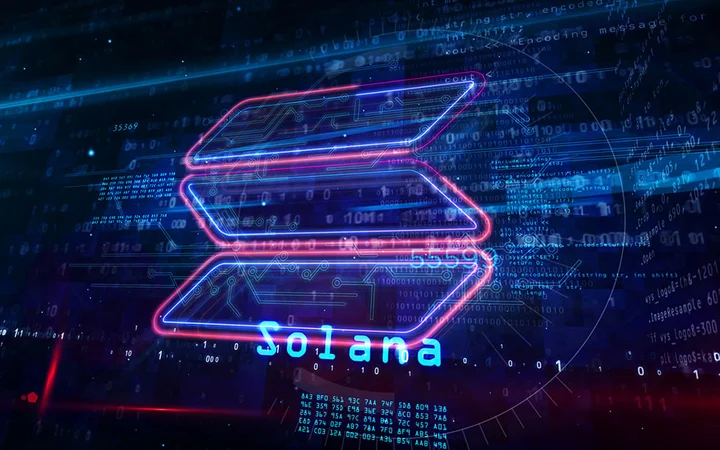How is Ethereum’s liquidity staking developing now?
What Progress has Ethereum's Liquidity Staking Made?Author: Pedro M. Negron, Medium; Translation: Plain Blockchain
The market for liquid staking tokens is showing diverse development. Although Lido’s dominance may be changing, the token holdings and concentration of large holders provide crucial information for the industry’s trends.
The Liquid Staking Token (LST) allows users to earn rewards from proof-of-stake blockchains without locking up their funds. This idea has become one of the most important subfields in the cryptocurrency field, with approximately $20 billion staked through Ethereum’s liquid staking tokens as of November 2023.
Given the immense size of the staking market, many participants have joined the Ethereum liquid staking sector. Lido’s stETH remains the dominant liquid staking token, but other protocols have seen significant expansion and progress, especially after the Shapella upgrade introduced the ability to withdraw staked assets in April 2023.
- Father of ChatGPT’ Ultraman suddenly stripped of office Several signs have emerged since the developer conference.
- Breaking News Ultraman Fired, Internal Conflict in OpenAI Board of Directors
- LianGuai Morning News | Fidelity submits Ethereum ETF application. SlowMist Trader Joe frontend contract address compromised.
As liquid staking protocols enter the market, many introduce unique mechanisms to gain a competitive edge and differentiate themselves from existing options. Lido has played a vital role in the liquid staking landscape of the Ethereum ecosystem, achieving significant scale through institutional node operation. Prior to the Shapella upgrade, it held the majority market share, accounting for over 90% of the liquid staking token market share. With the launch of the Shapella fork and increased investor confidence in holding liquid staking tokens, the market share of alternative options has increased to 15%.

Alternative liquid staking token products demonstrate their uniqueness in different ways, such as Rocket Pool’s rETH token, which holds the second-largest market share. Rocket Pool is particularly known for its strong commitment to decentralization. The protocol’s main goal is to cultivate a decentralized validator community, ensuring that validator power does not concentrate in the hands of a few individuals or entities.
The liquid staking token models take different approaches, such as the Frax protocol’s dual-token system with frxETH and sfrxETH. In this dual-token model, one token receives strong incentives in the DeFi ecosystem, while individuals holding the other token can earn combined staking rewards for both tokens.
In addition, although Lido and its stETH token dominate the current market, there are indications in other various tokens of their stability and potential for long-term presence in the market.

Currently, an impressive $18.3 billion has been staked through Lido’s stETH, and the protocol has the highest number of holders in the market, with an impressive 238,600 unique addresses holding the token. Following stETH, ankrETH ranks second with 149,000 holders, indicating a significant difference in the number of tokens held between the top two positions in the market.
Another trend worth noting besides stETH is the increasing number of cbETH holders, which is Coinbase’s EthereumstakingToken that was introduced just over a year ago. The number of holders of this token has been growing over time, indicating a continuous increase in demand for the token and staking through Coinbase. While it may not have the highest number of holders, cbETH has successfully surpassed other competitors in the industry, currently having 108,000 unique holders. Furthermore, as cbETH expands, another encouraging sign of its token’s health is that it has the highest proportion of hodlers among all liquid staking tokens.

54.26% of all cbETH holders have been holding for more than a year, demonstrating strong commitment and long-term vision from the holders. A significant number of hodling addresses represents a positive indicator as it shows trust in the token and its underlying protocol. In this case, it demonstrates a considerable degree of trust in its issuer, Coinbase.
This observation could be attributed to Coinbase’s cold storage approach to tokens. Specifically, if the token is held in the form of customer accounts within a centralized exchange, it could explain the lack of liquidity for the token. Even if that is the case, it is still an overall positive sign. Because if the demand for the token goes down, the exchange will constantly adjust as the token may be sold or burned. Finally, the concentration of major holders is a feature that indicates the level of decentralization. This helps identify tokens with excessive concentration among holders, which may create unfavorable conditions for the ecosystem. Large holders could bring additional risks to other token holders, making this information valuable in assessing their potential market impact.

Although this metric highlights the fact that most tokens in the liquidstakingecosystem are concentrated in the hands of major holders, it is worth noting the ongoing decentralization process occurring in Lido’s development. In the past year, the concentration of whale holders of Lido’s governance token, LDO, has decreased. This concentration has decreased by over 10%, dropping from 67.8% to 56.4%.
This trend is also an indicator of the maturity of the token, as lower concentration implies a wider distribution of token holders, indicating a greater level of decentralization and reduced influence of individual holders, which is generally seen as a positive development. Newly launched tokens tend to exhibit high concentration among major holders. Therefore, considering that Lido’s stETH token has been widely adopted and scaled, it is logical that the concentration of major holders of its governance token is decreasing over time.
All in all, the liquid staking market within the Ethereum ecosystem presents a vibrant landscape, with each token having its unique characteristics and user base. While Lido’s stETH token has historically dominated, recent trends indicate a growing diversity of choices and evolving competitive patterns. It is worth noting that tokens like cbETH have attracted a significant number of holders, highlighting their appeal and long-term potential. The proportion of hodlers and the concentration of major holders are key indicators of token health and ecosystem decentralization. Additionally, the decrease in whale ownership of governance tokens, like Lido’s LDO, reflects the maturity of these tokens and their development towards greater decentralization.
We will continue to update Blocking; if you have any questions or suggestions, please contact us!
Was this article helpful?
93 out of 132 found this helpful
Related articles
- ChatGPT creator and OpenAI CEO fired, kicked out of the board!
- Fidelity Wants to Take ETH Investing to the Moon with Ethereum ETF
- From Altman to Murati OpenAI shakes things up! Sam Altman out, CTO Mira Murati takes the reins as interim CEO
- Singapore’s Crypto Adventure Get Ready for Wholesale CBDC Issuance in 2023!
- From Politics to Crypto Andrew Yang Dives into the World of Blockchain at Summit
- JPMorgan Hops on Board the Crypto Train Exploring Personalized Portfolio Management with Fund Tokenization
- Republic Teams Up with Avalanche Introducing the Ultimate Profit-Sharing Investment Note





